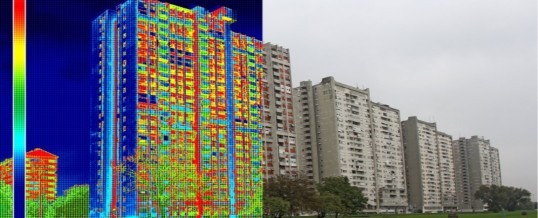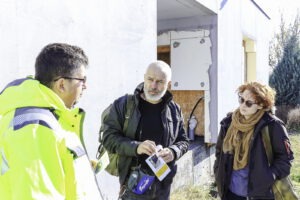More than 35% of buildings in Europe are over 50 years old, and 75% are energy inefficient
We spend 90% of our time inside buildings, so their properties have a major impact on our health and well-being.
However, more than 35% of buildings in Europe are over 50 years old, and 75% are energy inefficient. In fact, approximately 10% of the European population suffers from “energy poverty”, caused by high energy prices in relation to consumer incomes, but also by the inefficiency of buildings that are not thermally insulated.
In Romania, the percentage is almost double.
Moreover, over 25% of the poor population and over 10% of the population above the poverty line expect not to be able to heat their homes at an adequate level, while over 20% of the country’s population registers delays in paying bills for utilities (Data centralized by the Ministry of Regional Development and Public Administration in the 2017 National Housing Strategy Project).
Another challenge that the EU is focusing on more and more and that should be given more attention in Romania is fire safety, especially considering that 90% of them take place in buildings. Beyond the incalculable human damage, fires also involve huge material costs.
Annually, they “burn” 126 billion euros, equivalent to 1% of the European GDP.
In this context, the renovation of buildings with materials with high performance in terms of energy efficiency and fire safety represents the most important and most profitable investment we can make for the future of the cities in which we live.
Given that over 97% of the building stock in the EU must be renovated in order to achieve the decarbonization objectives for 2050, according to BPIE (Buildings Performance Institute Europe), this has become a topic of critical importance on the European agenda.
Recently, Rockwool, in partnership with BPIE, gathered in Copenhagen a group of over 50 experts from Europe – architects, developers, researchers, consultants – to exchange experiences and know-how regarding the most successful regeneration projects urban on the continent.
The discussions highlighted a series of essential factors that contribute to the success of such a project, providing added value to the communities.
First of all, it is very important that an urban regeneration strategy starts from the needs of the residents and builds on the existing culture at the local level.
The approach must be bottom-up, personalized, and involve all residents, including vulnerable groups. An efficient renovation of the buildings would improve the ability of residents to pay rents and utilities due to the reduction of energy bills and would ensure a higher level of comfort and safety for everyone at affordable costs.
Thus, the transformation of a city is not only physical, but also social. We need a long-term plan that addresses the multiple benefits of renovation, such as a better standard of living, alleviating energy poverty, increasing real estate value, reducing maintenance costs, reducing the impact of climate change, etc.
Looking from a financial perspective, inadequate housing is associated with numerous costs, some of which are not taken into account when we talk about the condition of the buildings – for example, those related to health, safety and interventions in emergency situations, school results And so on
That is why, in the cost-benefit analysis that must be the basis of a renovation program, we must also integrate these calculations.
The success of any project is also given by its resistance over time.
It is obvious that renovations using high quality and durable materials are the cheapest long-term solution. Besides the fact that a very low demand for energy is ensured in the next 30-50 years, the costs of building maintenance and administration are also significantly reduced.
The renovation of buildings deserves more attention, and the adaptation of some international recipes can be an effective solution to solve the urban challenges we are currently facing.
Therefore, following the workshop in Copenhagen, Rockwool centralized in a report four case studies that can serve as examples for other urban regeneration projects: Lindängen (Malmö, Sweden), Wilmcote House (Somerstown, Portsmouth, UK ), Albertslund (Copenhagen, Denmark) and Kolenkitbuurt (Amsterdam, Netherlands).
These success factors must be adapted to the culture and needs of local communities, so we invite you to find out more information about these projects and expert opinions from the report available at this link.
Source: Wall-Street
Photo credit: Ivan Smuk / Shutterstock









